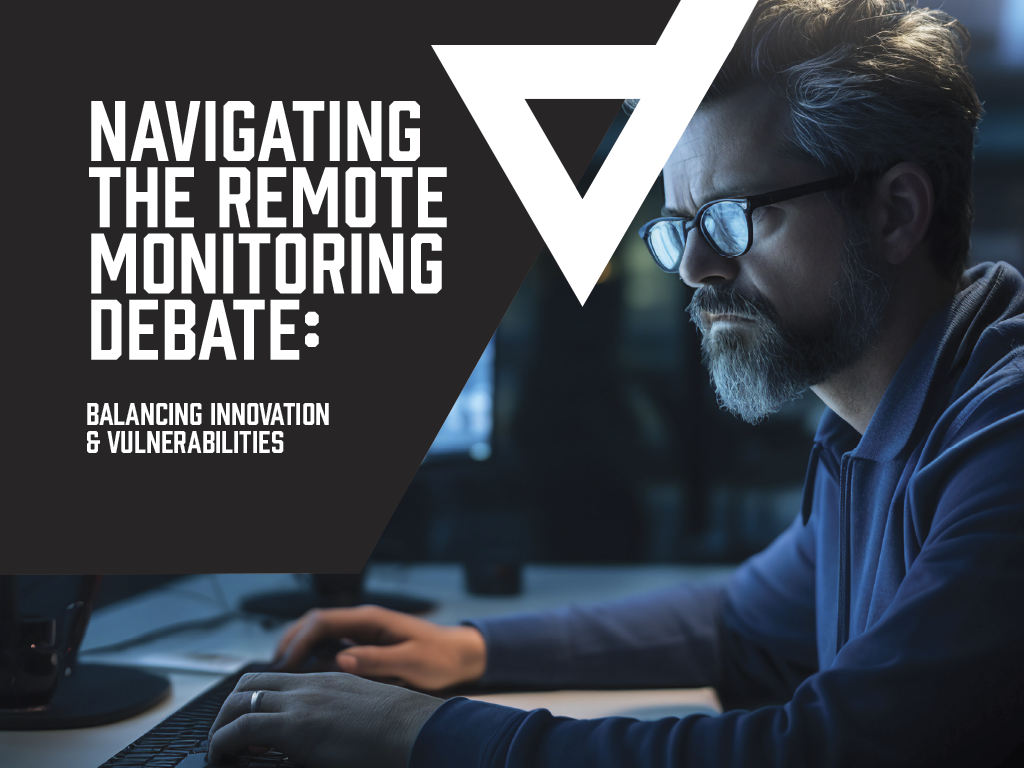Navigating the Remote Monitoring Debate: Balancing Innovation & Vulnerabilities

The evolution of security surveillance has seen a remarkable shift with the emergence of remote monitoring centers, offering a dual narrative of transformation and deliberation within the industry. As these centers become central to modern security frameworks, the discourse around their implementation encompasses a spectrum of viewpoints, each advocating for distinct advantages while acknowledging inherent challenges.
Industry leaders Morgan Hertel, Vice President of Technology and Innovation at Rapid Response Monitoring and current President of the Monitoring Association,
and Rick Sheets, Vice President of Monitoring and Compliance at Brinks Home, brought insightful perspectives to this discourse during ESA’s Virtual Town Hall in 2023. This article will spotlight their perspectives on the benefits and challenges.
The Catalyst for Remote Monitoring: The COVID-19 pandemic served as the catalyst for considering remote monitoring as a viable option within the security industry. Amidst uncertainty about the future, industry leaders recognized the need to continue providing monitoring services and swiftly adapt to remote work setups. Initially intended as a temporary solution, remote monitoring became permissible under UL’s guidelines, albeit with exceptions for certain types of monitoring like DoD monitoring. The transition to remote work was marked by technological challenges, including sourcing equipment like headsets amidst supply shortages. Uncertainty persisted regarding when nonessential employees could return to the workplace, with guidelines evolving alongside the pandemic’s progression and still being debated to this day.
Pros of Remote Monitoring Centers
Innovation in Security Surveillance: Monitoring centers usher in a new era of security, leveraging real-time data analysis and AI-driven technologies for enhanced threat detection and rapid response mechanisms. This innovation signifies a pivotal shift toward technology-driven security solutions.
Scalability and Cost-Effectiveness: The remote nature of monitoring centers allows for scalability without geographical limitations. This scalability fosters cost effectiveness and flexibility in adapting to varying security needs across different locations.
Geographical Independence in Hiring: One significant advantage is the ability to recruit talent from diverse locations, addressing the critical issue of workforce shortage in the security industry. Monitoring centers liberate hiring practices from geographical constraints, ensuring access to a broader talent pool.
Cons of Remote Monitoring Centers
Challenges in Reliability and Latency: Despite advancements, challenges persist regarding system reliability, latency issues, and occasional false alarms. These aspects cast doubt on the reliability of remote monitoring systems, requiring continual refinement.
Cybersecurity Vulnerabilities: The remote accessibility of monitoring systems introduces cybersecurity vulnerabilities, making these centers potential targets for cyber threats. Ensuring robust cybersecurity measures becomes imperative to prevent breaches.
Ethical and Privacy Concerns: Privacy considerations and ethical dilemmas arise concerning data security and individual privacy infringements. Maintaining a balance between security surveillance and personal rights remains an ongoing challenge.
Striking a Balance
The debate around remote monitoring centers in the security industry encapsulates a quest for equilibrium—leveraging innovation while addressing challenges. The advantages of enhanced surveillance and geographical flexibility in hiring stand in contrast to reliability issues, cybersecurity vulnerabilities, and ethical considerations.
As anybody that’s running an organization, you’re going to have to balance that risk versus reward,” says Morgan Hertel. “One of the concerns, and rightly so, is the privacy issue. But you run that risk, and that’s part of the risk reward. Is it enough to say no to work at home? That’s an individual decision.”
Rick Sheets echoes this sentiment, emphasizing the importance of minimizing distractions and recognizing the benefits of geographical diversity in employees. “It’s really difficult to get employees these days. Being able to have that diversity in employees across the nation instead of within driving range of your monitoring center is a challenge.”
The future of remote monitoring hinges on striking a balance— where innovation harmonizes with privacy preservation, and technology-driven surveillance meets ethical imperatives. Despite challenges, remote monitoring centers represent an evolution that intertwines technological advancement with ethical responsibility. Embracing these challenges and harnessing innovation will steer the industry toward a future where security remains robust, responsive, and respectful of individual rights.




